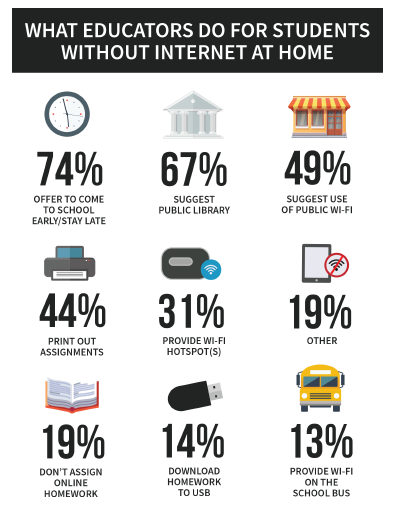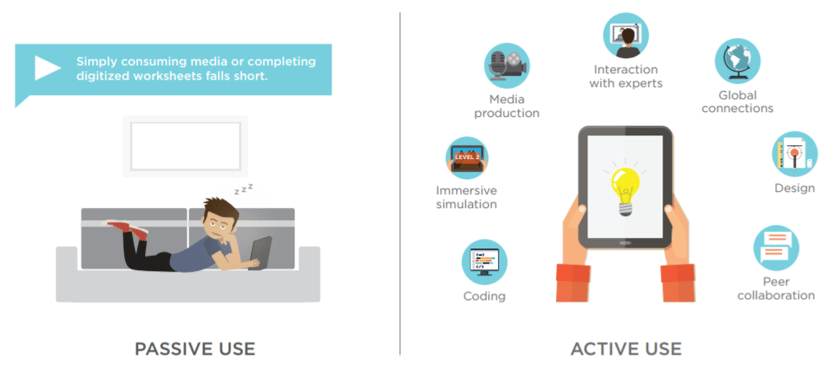Closing the Homework Gap Shouldn’t be Scary
Written by:
Kajeet
 While 98 percent of U.S. kids live in a household that has some form of a mobile device, the Homework Gap is still scarily present in schools across the nation.
While 98 percent of U.S. kids live in a household that has some form of a mobile device, the Homework Gap is still scarily present in schools across the nation.
According to a recent report on children in the digital world, “kids in lower-income households still lag behind peers from more affluent households in areas such as home computer access (72 percent vs. 97 percent) and connection to high-speed broadband (74 percent vs. 96 percent).
It is vital to focus on closing that gap and ensure every student has the same access to devices and the Internet, leaving those tricks behind once and for all.
Homework Gap Haunt
Many low-income families might have mobile access, but many remain under-connected according to research by The Joan Ganz Cooney Center at Sesame Workshop. The research states, “one quarter (23 percent) of families below the median income level and one third (33 percent) of those below the poverty level rely on mobile-only Internet access.”
But mobile-only access is not sufficient.
- 29 percent of mobile-only families say they have hit their data limits in the past year.
- 24 percent have had their phone service cut off in the past year due to lack of payment.
- 21 percent say too many people share the same phone.
Students with mobile-only access may lack sufficient time on the device to get their homework done, not to mention the difficulty of writing a research report on such a small device.
A seventh-grade science teacher prompts educators to answer these two questions as we work toward closing the Homework Gap:
- How do we assist those students who don’t have Internet access to obtain the proper access to broadband?
- How do we teach our students how to use technology as a way to create and not just consume (entertainment)?
Let’s address the first question.
In “The Current State of 1:1” infographic, educators use a variety of solutions to address students without Internet at home.
Here at Kajeet, we say closing the Homework Gap doesn’t have to be scary. Providing Wi-Fi hotspots to students will ensure they have the access they need to do homework outside the classroom.
Students can connect on one of four of the nation’s leading networks with the Kajeet SmartSpot® to access the educational content they need to complete homework. No tricks here – we’ll even treat you to a free test drive of the device if you request a demo here.
So how can we address question two about teaching students how to create, not just consume, content digitally?
The Witching Hour: Unrestricted Screen Time
In an EdSurge article, the author of “Screenwise: Helping Kids Thrive (and Survive) in Their Digital World”, Devorah Heitner “voices concern about kids having unrestricted access to video sites like YouTube, where kids spend an average of 17 minutes a day, according to the survey.”
Digital tools can be used in education to create active learning. And as more students have access to devices, mobile or otherwise, it is important to teach them how to engage.
And while the EdSurge article points out the importance of educating families on productively using technology at home, it can haunt parents and educators not knowing what their children can access.
Filtering Access
Our innovative cloud platform, Kajeet Sentinel® helps parents and educators put their minds at ease by providing safe, CIPA-compliant filters on all Kajeet devices. Sentinel analyzes and categorizes millions of new URLs every day and provides customized Internet access, creating a distraction-free learning environment for students.
Passive vs. Active
Additionally, the Department of Education provides a great graphic in their 2016 National Education Technology Plan demonstrating the difference between active and passive tech use. The plan states, “A digital use divide continues to exist between learners who are using technology in active, creative ways to support their learning and those who predominantly use technology for passive content consumption.”
Digital Citizenship
And part of closing the digital divide is teaching students how to be smart digital citizens. Providing devices and access is just the beginning. Here is a blog post that provides four strategies for teaching digital citizenship in the classroom.
No More Ghostly Graduation Rates
A recent Education Dive article points to poverty as a continued hindrance to increasing graduation rates across the nation. Particularly, it reviews the graduation rate in California, which was at 83.2 percent for 2016, but experts say poverty will continue to be an obstacle to reaching a 100 percent graduation rate (the goal of the Los Angeles Unified School District Superintendent).
As discussed above, students from low-income families lack the same access to tools as their more affluent peers. Providing them Internet access helps level the playing field, and hopefully increases graduation rates.
Asking students to find public Wi-Fi, along with the transportation to get there, or not fully using digital tools outside the classroom, only puts them at a disadvantage. The digital world is here to stay, so let’s do what we can to make the Homework Gap a scary story of the past.
Happy Haunting.



